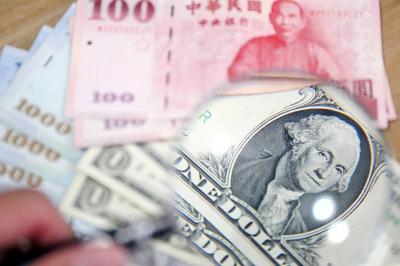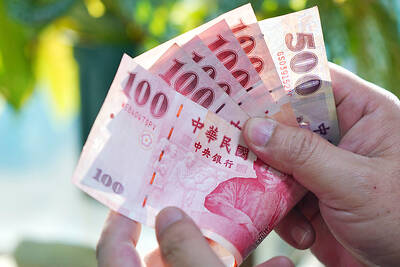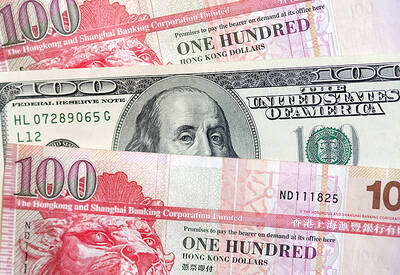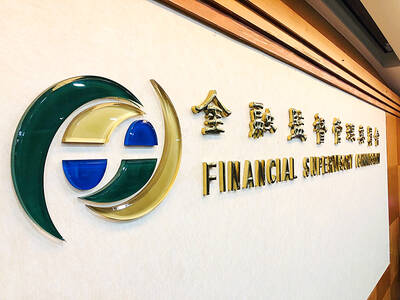Taiwanese who back a planned trade pact with China and those who oppose it agree on one thing at least — the agreement will have a major impact on the nation’s labor market.
While those in favor of the much-anticipated deal with Taiwan’s giant neighbor say there will be massive gains, others fear it will wipe out jobs on a huge scale.
No one knows for sure what the consequences will be but the uncertainty unsettles those whose livelihoods may be at risk from the mainland’s millions of underpaid workers.
“I’m in the dark and I’m afraid my job will be affected,” said a Taiwanese auto worker, who only wanted to be identified by his surname Wu.
“I don’t know what the agreement is about at all, because the government has failed to give the full details,” Wu said.
During Taiwan’s boom years from the 1960s to the 1990s, unemployment was seldom on the agenda, but now it has emerged as a decisive political issue.
So far this year the jobless rate has been 5.82 percent, nearly double the 2.99 percent recorded as late as in 2000.
The government insists the trade pact with China, referred to as an economic cooperation framework agreement (ECFA) will boost the flow of goods and personnel, raising annual economic growth by more than one percentage point.
Taiwan and China will reportedly hold informal talks this week on the trade pact — the fourth such meeting, which will aim for a timetable for formal negotiations.
Ahead of the talks, the Taiwanese government has suggested that more than a quarter of a million jobs will be created by the agreement on a net basis.
“It’s like a rose,” Premier Wu Den-yih (吳敦義) said on Friday. “Optimists see the flower, while pessimists see the thorns. The government has to look at both the flower and the thorns.”
The flower, according to Wu, is 350,000 new jobs, especially in chemicals, machinery and textiles, while the thorns are more than 80,000 jobs at risk in industries such as tiles and home electronics.
“The estimate of 80,000 affected workers is the worst-case scenario,” an official at the Council of Labor Affairs said.
“They won’t necessarily all lose their jobs. Some will just receive on-the-job training and their employers will have to streamline to enhance competitiveness,” the official said.
However, some analysts called the 80,000 figure unrealistically low, given the country’s labor force of more than 10 million.
“What if more industries relocate to China for lower production costs once the pact is signed? That will really hit the job market here,” Mega Securities (兆豐證券) analyst Lucas Lee (李志安) said.
Kenneth Lin (林向愷), an economist at National Taiwan University, said the flow of Taiwanese investment to China — up from 0.5 percent of the GDP in 2000 to 2.6 percent last year — had a clear impact on jobs.
“With more investors moving to China, our jobless rate has averaged 4 [percent] to 5 percent between 2000 and 2008, up from two to three percent in the 1990s,” he said.
“I expect 150,000 to 200,000 workers will lose their jobs due to the pact,” he said.
Chinese Nationalist Party (KMT) legislator and management professor at Chengchi University Lai Shyh-bao (賴士葆) said the focus on the relationship with China was too narrow, pointing out the pact’s potentially beneficial impact on ties with other economies.
“The pact is likely to attract foreign investors to Taiwan as they expect to benefit from the integration with China,” he said.
“Increasing foreign investments are expected to create job openings to locals,” Lai said.

The US dollar was trading at NT$29.7 at 10am today on the Taipei Foreign Exchange, as the New Taiwan dollar gained NT$1.364 from the previous close last week. The NT dollar continued to rise today, after surging 3.07 percent on Friday. After opening at NT$30.91, the NT dollar gained more than NT$1 in just 15 minutes, briefly passing the NT$30 mark. Before the US Department of the Treasury's semi-annual currency report came out, expectations that the NT dollar would keep rising were already building. The NT dollar on Friday closed at NT$31.064, up by NT$0.953 — a 3.07 percent single-day gain. Today,

‘SHORT TERM’: The local currency would likely remain strong in the near term, driven by anticipated US trade pressure, capital inflows and expectations of a US Fed rate cut The US dollar is expected to fall below NT$30 in the near term, as traders anticipate increased pressure from Washington for Taiwan to allow the New Taiwan dollar to appreciate, Cathay United Bank (國泰世華銀行) chief economist Lin Chi-chao (林啟超) said. Following a sharp drop in the greenback against the NT dollar on Friday, Lin told the Central News Agency that the local currency is likely to remain strong in the short term, driven in part by market psychology surrounding anticipated US policy pressure. On Friday, the US dollar fell NT$0.953, or 3.07 percent, closing at NT$31.064 — its lowest level since Jan.

Hong Kong authorities ramped up sales of the local dollar as the greenback’s slide threatened the foreign-exchange peg. The Hong Kong Monetary Authority (HKMA) sold a record HK$60.5 billion (US$7.8 billion) of the city’s currency, according to an alert sent on its Bloomberg page yesterday in Asia, after it tested the upper end of its trading band. That added to the HK$56.1 billion of sales versus the greenback since Friday. The rapid intervention signals efforts from the city’s authorities to limit the local currency’s moves within its HK$7.75 to HK$7.85 per US dollar trading band. Heavy sales of the local dollar by

The Financial Supervisory Commission (FSC) yesterday met with some of the nation’s largest insurance companies as a skyrocketing New Taiwan dollar piles pressure on their hundreds of billions of dollars in US bond investments. The commission has asked some life insurance firms, among the biggest Asian holders of US debt, to discuss how the rapidly strengthening NT dollar has impacted their operations, people familiar with the matter said. The meeting took place as the NT dollar jumped as much as 5 percent yesterday, its biggest intraday gain in more than three decades. The local currency surged as exporters rushed to